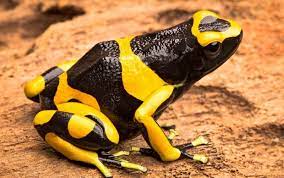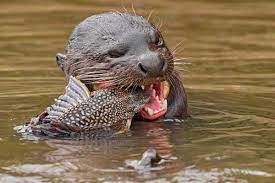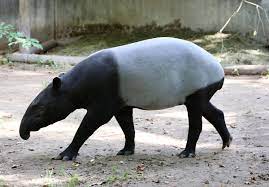Colombia, a jewel in South America, boasts an extraordinary wealth of biodiversity, making it one of the world’s biodiversity hotspots. However, this richness is under dire threat, and its precious heritage is in jeopardy.
In this compelling article, we delve into the heart of the matter, shedding light on the “Endangered Animals in Colombia.” The lush rainforests, towering mountains, and sprawling grasslands of this vibrant nation harbor a plethora of species, many of which face imminent extinction.
From the elusive Andean condor to the critically endangered cotton-top tamarin, Colombia’s unique flora and fauna are at a crossroads. Join us as we navigate through the unparalleled beauty and ecological importance of these endangered creatures, and discuss the urgent need for conservation efforts to ensure their survival for generations to come.
Table of Contents
Overview of Colombia’s Rich Biodiversity and Ecological Importance:
Colombia, a biodiverse wonderland, stands as one of Earth’s biodiversity hotspots. The country’s diverse topography, including rainforests, savannas, mountains, and coastal regions, fosters a vast array of unique flora and fauna. Colombia is home to approximately 10% of the world’s known species, boasting high levels of endemism.
Its exceptional biodiversity holds immense ecological importance, contributing to global climate regulation, pollination, and ecosystem stability. This biodiversity is intricately woven into the cultural fabric of Colombia, emphasizing the need for its preservation and sustainable management. However, this biological richness is now threatened due to various human-induced factors, demanding immediate conservation action to safeguard this precious heritage.
Threats to Biodiversity and Endangered Species:
Colombia’s biodiversity faces a multitude of threats, primarily driven by human activities. Habitat loss due to agriculture, logging, mining, and urbanization is a significant concern. Pollution, invasive species, and land degradation further exacerbate the issue. Overexploitation of natural resources, hunting, and poaching are pushing numerous species towards extinction. Climate change amplifies these threats, disrupting habitats and altering ecosystems. The delicate balance of Colombia’s ecosystems is at risk, necessitating urgent interventions to mitigate these perils and protect the incredible array of life the country harbors.
Andean Bear:

The Andean bear, also known as the spectacled bear, is a charismatic and endangered species residing in Colombia’s mountainous regions. Recognizable by its distinctive facial markings, it is the only bear species in South America. Threatened by habitat loss, poaching, and human-wildlife conflict, the Andean bear plays a vital role in the ecosystem as a seed disperser and helps maintain the biodiversity of its habitat.
Cotton-top Tamarin:

The cotton-top tamarin, a petite primate with a shock of white hair atop its head, is a critically endangered species in Colombia. Endemic to the country, these tamarins face severe threats from habitat destruction and the illegal pet trade. Efforts are underway to protect their habitat and support conservation programs, emphasizing community engagement and education to ensure the survival of this charismatic and ecologically important species.
Andean Condor:

The Andean condor, a majestic and iconic bird of the Colombian skies, is a near-threatened species. Known for its vast wingspan and breathtaking aerial displays, it’s a symbol of freedom and wilderness. Despite cultural significance, habitat degradation, hunting, and lead poisoning pose substantial threats to its population. Conservation initiatives strive to preserve this magnificent bird and its vital role in the ecosystem.
Golden Poison Frog:

The golden poison frog, a stunning and vibrantly colored amphibian, is one of Colombia’s most iconic and endangered species. Endemic to the rainforests, it is recognized by its striking golden skin, serving as a warning of its toxic nature. Threats like habitat loss and illegal wildlife trade jeopardize its survival. Conservation efforts and habitat protection are crucial to ensuring the continued existence of this captivating but imperiled species.
Blue-billed Curassow:

The blue-billed curassow, an enigmatic bird native to Colombia, is critically endangered due to habitat fragmentation and hunting. Characterized by its distinctive azure-colored bill and majestic appearance, this curassow plays a vital role in seed dispersal and forest ecology. Conservation initiatives strive to protect its dwindling habitat and combat hunting, aiming to secure a future for this remarkable species in the biodiversity-rich forests of Colombia.
Giant Otter:

The giant otter, an awe-inspiring and social creature endemic to Colombia’s rivers and wetlands, is critically endangered. Recognizable by its size and playful behavior, it faces threats from habitat degradation and illegal wildlife trade. Conservation programs focus on safeguarding their habitats, reducing human-wildlife conflict, and raising awareness to protect this charming and ecologically significant species.
Colombian Woolly Monkey:

The Colombian woolly monkey, a charismatic and endangered primate endemic to Colombia, is recognized for its thick, fur-like coat and expressive facial features. Habitat loss, deforestation, and hunting have significantly reduced their populations. Conservation efforts are vital to ensuring the survival of this remarkable monkey, focusing on habitat preservation, sustainable community practices, and education to protect its natural habitat and delicate ecosystem.
Magdalena River Turtle:

The Magdalena River turtle, a critically endangered species native to Colombia, dwells in the freshwater habitats of the Magdalena River basin. Recognizable by its distinct shell and habitat preferences, this turtle is threatened by habitat degradation, pollution, and illegal trade. Conservation initiatives focus on habitat restoration, anti-poaching efforts, and community engagement to protect this vital and unique species from further decline.
Brown Spider Monkey:

The brown spider monkey, an endangered primate native to Colombia, is recognized by its long limbs and prehensile tail. Habitat loss due to deforestation and hunting for bushmeat have pushed this species to the brink. Conservation strategies involve habitat preservation, wildlife corridors, and education to mitigate threats and ensure the survival of this extraordinary primate and its critical role in forest ecosystems.
Orinoco Crocodile:

The Orinoco crocodile, a large and endangered reptile found in Colombia’s rivers and wetlands, is threatened by habitat degradation, hunting, and climate change. Recognizable by its robust build and distinctive snout, this crocodile is a crucial predator in its ecosystem. Conservation efforts are vital to protect their habitats, combat poaching, and raise awareness about the importance of coexisting with this iconic and ecologically significant species.
Frogs:

Colombia is home to a rich diversity of frog species, many of which are endangered due to habitat loss, pollution, climate change, and a deadly amphibian disease called chytridiomycosis. These amphibians play a crucial role in maintaining the balance of ecosystems by controlling insect populations. Conservation efforts focus on habitat conservation, disease monitoring, and captive breeding programs to protect these fragile and vital members of Colombia’s biodiversity.
Turtles:

Colombia hosts various turtle species, several of which are endangered due to habitat destruction, pollution, and poaching for the illegal wildlife trade. Turtles are integral to aquatic ecosystems, contributing to nutrient cycling and helping maintain healthy populations of aquatic plants and animals. Conservation initiatives emphasize habitat protection, anti-poaching measures, and community education to preserve these ancient and ecologically important creatures.
Mountain Tapir:

The mountain tapir, an endangered mammal native to Colombia, is characterized by its distinctive appearance and crucial role in seed dispersal within high-altitude ecosystems. Habitat fragmentation, hunting, and climate change pose significant threats to their populations. Conservation efforts aim to protect their habitats, combat illegal hunting, and involve local communities in preserving this unique and ecologically significant tapir species.
Poison Dart Frog:

The poison dart frog, renowned for its vibrant colors and toxic skin secretions, is a captivating yet endangered species in Colombia. Habitat loss, climate change, and illegal collection for the pet trade are major threats. Conservation efforts prioritize habitat conservation, breeding programs, and education to combat illegal trade and protect these stunning frogs that play a vital role in maintaining insect populations and forest health.
Red-crested Tree-Rat:

The red-crested tree rat, a unique and elusive rodent species in Colombia, is critically endangered. Habitat loss due to deforestation and hunting are the primary threats. Recognized by its striking red crest and arboreal lifestyle, this tree rat has a significant role in seed dispersal. Conservation initiatives focus on habitat restoration, anti-poaching efforts, and research to understand and protect this rare and ecologically important mammal.
Colombian Weasel:

The Colombian weasel, a lesser-known yet threatened carnivore, faces endangerment due to habitat loss, human encroachment, and hunting. This elusive species plays a crucial role in controlling rodent populations. Conservation strategies emphasize habitat preservation, sustainable land use, and public awareness to protect this unique and ecologically significant member of Colombia’s wildlife.
Santa Marta Parakeet:

The Santa Marta parakeet, a striking and endangered bird native to Colombia, is identified by its vibrant plumage and distinctive features. Habitat loss due to deforestation and capture for the illegal pet trade are critical threats. Conservation initiatives prioritize habitat preservation, anti-trafficking measures, and community involvement to safeguard this captivating parakeet and its vital role in its unique ecosystem.
Fuertes’s Parrot:

Fuertes’s parrot, an endangered avian species residing in Colombia, is known for its captivating colors and distinct markings. Deforestation, habitat degradation, and illegal trapping for the pet trade jeopardize its population. Conservation programs focus on habitat restoration, anti-poaching efforts, and raising awareness to protect this remarkable parrot and its crucial contribution to the ecosystem.
Sapphire-bellied Hummingbird:

The sapphire-bellied hummingbird, a dazzling and endangered bird species found in Colombia, is characterized by its vibrant plumage and diminutive size. Habitat loss due to deforestation and climate change is a significant threat. Conservation endeavors emphasize habitat protection, reforestation, and community engagement to ensure the survival of this exquisite hummingbird and its vital role as a pollinator.
Galápagos Petrel:

The Galápagos petrel, an endangered seabird species, holds its place among Colombia’s diverse avian life. Recognized by its distinct appearance and oceanic habits, this bird faces threats such as bycatch, habitat disturbance, and introduced species predation. Conservation strategies prioritize reducing accidental catches, protecting nesting sites, and researching their elusive behaviors. Preserving the Galápagos petrel is essential not only for their intrinsic value but also for the valuable information they provide about marine ecosystems and ocean health.
The white-bellied spider monkey, an endangered primate native to Colombia, is recognized for its unique coloration and arboreal lifestyle. Habitat loss, deforestation, and hunting for bushmeat are major threats. Conservation efforts emphasize habitat protection, community involvement, and research to ensure the survival of this remarkable and ecologically significant spider monkey.
Illegal Wildlife Trade and Poaching:
Illegal wildlife trade and poaching represent severe threats to Colombia’s endangered animals. The demand for exotic pets, animal parts, and traditional medicines drives poachers to exploit vulnerable species. The jaguar, Andean condor, and giant anteater are among the many targets.
Criminal networks fuel this trade, posing significant challenges for conservation efforts and law enforcement agencies. Tackling this illicit trade necessitates international collaboration, strengthened legislation, and heightened awareness to curb the demand for wildlife products.
Climate Change and Its Effects on Endangered Species:
Climate change amplifies the risks faced by endangered animals in Colombia. Rising temperatures, altered precipitation patterns, and extreme weather events disrupt habitats and migration routes. Species adapted to specific climatic conditions struggle to cope with these rapid changes.
The vulnerable ecosystems, like coral reefs and cloud forests, face imminent threats. Mitigating climate change through reduced carbon emissions, habitat restoration, and sustainable practices is crucial for the survival of endangered species and the preservation of Colombia’s rich biodiversity.
Spotlight on Endangered Animals in Colombia:
Colombia hosts a multitude of endangered animals, each facing unique challenges. The critically endangered cotton-top tamarin, iconic Andean condor, elusive mountain tapir, and majestic jaguar are just a few at the brink of extinction. Their struggles highlight the urgent need for conservation efforts and initiatives to protect these magnificent creatures, which are not only vital for Colombia’s biodiversity but also contribute to the global ecological balance.
Conservation Efforts and Initiatives:
Colombia has made significant strides in conservation through the establishment of protected areas, conservation projects, and biodiversity research. Organizations and governmental bodies work tirelessly to combat habitat loss, mitigate the effects of climate change, and counter illegal wildlife trade.
Community engagement and education play a vital role in promoting sustainable practices and instilling a sense of responsibility toward nature. International collaboration and funding are also imperative to bolster these efforts and ensure a sustainable future for Colombia’s endangered animals and biodiversity.
Final Word:
Preserving Colombia’s biodiversity and protecting its endangered animals are paramount for the planet’s ecological well-being. Sustainable development, responsible consumer behavior, and stringent conservation policies are essential in securing a future where Colombia’s natural heritage can thrive. Through collective dedication and concerted efforts, we can aspire to pass down a legacy of diverse and flourishing ecosystems to generations yet to come.
Reference:
- https://www.worldatlas.com/articles/endangered-mammals-of-colombia.html
- https://animalia.bio/lists/country/endangered-species-of-colombia

Rahul M Suresh
Visiting the Zoo can be an exciting and educational experience for all involved. As a guide, I have the privilege of helping students and visitors alike to appreciate these animals in their natural habitat as well as introducing them to the various aspects of zoo life. I provide detailed information about the individual animals and their habitats, giving visitors an opportunity to understand each one more fully and appreciate them in a more intimate way.









